According to reports, the UCSB study found that computers and human vision are very different. Even if the machine vision has made great progress, it still cannot match the animal's ability to search visually in complex scenes. How to use human eye search strategy to improve computer vision It is vital. Therefore, when the target object is inconsistent with the size of the scene, it is not a human defect to see the target; instead, it is a by-product of a useful strategy, that is, the brain can quickly reduce the impact of potential interferers.
Before proceeding, please observe the image below to find all the toothbrushes in the picture.
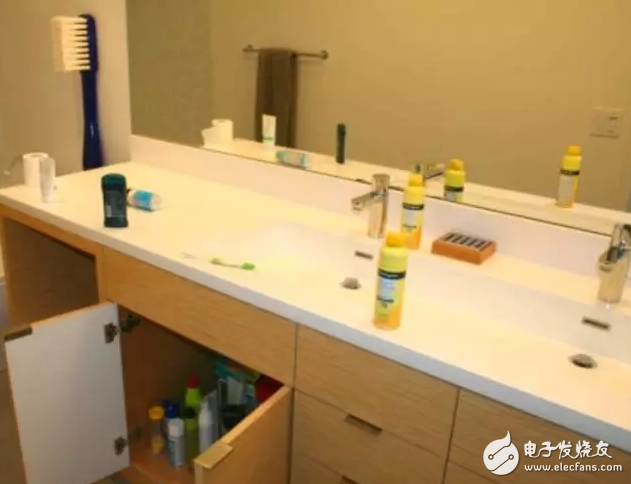
Did you notice the huge toothbrush on the left side of the picture? Maybe not. According to scientists at the Department of Psychology and Brain Science at the University of California, Santa Barbara, this is because when humans are looking for a particular object, it is often easy to see objects that do not match the rest of the scene.
Researchers at the University of California, Santa Barbara, found that when humans are looking for a particular object, it is often easy to see objects that don't match the rest of the scene. They studied this phenomenon, trying to better understand the difference between humans and computers in visual search, and proposed to use human visual search strategies to improve computer vision.
When humans are looking for a particular object, it is often easy to see objects that do not match the rest of the scene.
Scientists are studying this phenomenon in an attempt to better understand the difference between humans and computers in visual search. Their findings are published in the latest issue of Current Biology.
Hiding under the eyelids“When something appears in an unusual size, you look at it more often because your brain automatically ignores it,†says UCSB professor Miguel Eckstein, who specializes in computaTIonal human vision, vision. Attention and search.
This experiment uses scenes of ordinary objects in computer-generated images that vary in color, angle, and size and are blended into a "missing target" scene. The researchers asked 60 subjects to search for specific items (such as toothbrushes, parking meters, and mice) in these images and use eye tracking software to monitor their lines of sight.
Researchers have found that when objects vary greatly in size from normal size (too big or too small), people tend to overlook targets even if they are staring straight at the target.
In contrast, according to scientists, computer vision does not have this problem. However, in the experiment, the researchers found that the most advanced computer vision technology - deep neural network - also has its own limitations.
Human search strategy can improve computer vision
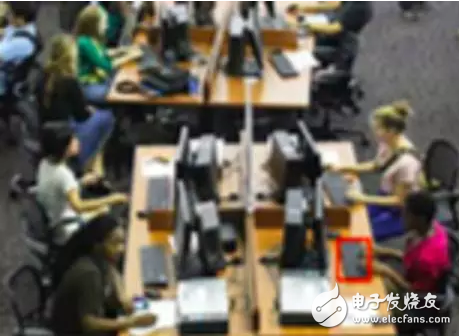
Deep learning algorithm incorrectly identifies the keyboard in the red box as a mobile phone (Source: UC Santa Barbara)
For example, a CNN deep learning neural network incorrectly recognizes a computer keyboard as a mobile phone based on the similarity of shapes and the position of the object relative to the hand (the phone is often held in the hand). But for humans, the size of this object (as opposed to the human hand) is clearly inconsistent with the phone.
The researchers pointed out in the paper: "This strategy can make people reduce mistakes when making decisions quickly."
Eckstein said: "Our idea is that when you first see a scene, your brain will quickly process the scene information in a few hundred milliseconds or less, and then you will use this information to guide you. Look for typical locations where objects appear." "At the same time, you will also focus on those objects that are the same size as the object you are looking for."
That is, the human brain uses the relationships between objects to guide their eyes—a useful strategy for quickly processing scene information, eliminating interference and reducing false positives.
According to the researchers, this discovery may be instructive for improving computer vision by using some of the techniques that the brain uses to reduce false positives.
Future researchEckstein said: "There are some theories that people with autism spectrum disorders are more concerned with local scene information than with the overall structure." Eckstein is planning a follow-up study, he said: "Therefore, there is a possibility Yes, people with autism spectrum disorders may be less likely to miss objects that were incorrectly magnified, but before we proceeded with this study, it was not possible to determine this."
Next, the researchers will focus on the brain activity that occurs when we see an object that is erroneously magnified.
Postdoctoral researcher Lauren Welbourne said: "There are many studies that have identified areas of the brain that deal with scenes and objects. Now researchers are trying to understand which specific properties of these scenes and objects are being presented to these areas of the brain." How the object is rendered on the cerebral cortex and how the background of the scene affects the perception of the object.
He said: "So what we have to do is to find out how these brain regions react to objects that are correctly or incorrectly scaled in a scene. This may help us determine which regions are wrong for us to see. The magnified object has an effect."
High TG PCB - High Temerature Circuit Board for PCB applications that requires high temperature.
In recent years, there are more and more customers request to manufacture PCB with high Tg.
If you work with printed circuit boards in your industry, you may or may not be familiar with the high-TG PCBs. Since the effective operation of your printed circuit boards is so important to your business, it may be in your best interest to understand a little bit more about high-TG printed circuit boards.
What Is High-TG printed circuit board?
Tg means Glass Transition Temperature. As flammability of printed circuit board (PCB) is V-0 (UL 94-V0), so if the temperature exceeds designated Tg value, the board will changed from glassy state to rubbery state and then the function of PCB will be affected.
If working temperature of your product is higher than normal (130-140C), then have to use high Tg material which is > 170C. and popular PCB high value are 170C, 175C, and 180C. Normally the PCB Tg value should be at least 10-20C higher than working temperature of product. If you 130TG board, working temperature will be lower than 110C; if use 170 high TG board, then maximum working temperature should be lower than 150C.
When Do You Need a High-Temperature Circuit Board?
You need a high-temperature circuit board for your applications if your PCB will be experiencing a thermal load no greater than 25 degrees Celsius below the TG. If your product will be operating in the 130-degree Celsius range or higher, you will want to use a high-TG PCB to be safe. The main reason for the Hi TG PCB is because of the movement to RoHS pcb`s. It is causing most of the pcb industry to move toward Hi-TG materials because of the higher temperatures needed for the lead-free solder to flow.
Applications for High-Temp PCBs
If you are working with high power density designs whose heat generation is likely to overwhelm your heat sinks or other heat management methods, a high-TG PCB is really the only answer. Trying to reduce the heat generation of your PCB may affect the weight, cost, power requirements or size of your application, and it is usually much more cost-effective and practical to simply start with a high-temperature heat-resistant PCB.
High temperatures can be disastrous for unprotected PCBs, damaging dielectrics and conductors, creating mechanical stresses due to differences in thermal expansion rates and ultimately causing everything from inconsistent performance to total failure. If your applications are in any danger of subjecting your PCBs to extreme temperatures or the PCB is required to be RoHS Compliant, it will be in your best interest to look into high-TG PCBs.
- Multilayer PCB boards with many layers
- Industrial electronics
- Automobile electronics
- Fineline trace structures
- High-temperature electronics
Considerations for Heat Dissipation
High-TG PCBs will be very important when you are looking to protect your printed circuit boards from the high temperatures of your application`s process or during the extreme temperatures of lead free assembly, but you will naturally want to consider multiple methods of drawing the extreme heat generated by electronic applications away from your board.
There are three considerations for dissipating the high heat generated by the action of electronics with printed circuit boards: convection, conduction and radiation.
Convection heat transfer is the process of transferring heat to air or water to allow it to flow away from an area - for example, when fluid absorbs heat and flows to a heat sink where it cools. Convection can also refer to the use of a fan or pump to force air over the surface, drawing heat away with it.
In most printed circuit boards, you will find a convection system where convection, usually including a cooling air fan, bears the heat through thermal vias to large, emissive heat sinks connected to conductive backings.
Conduction heat cools by putting the heat sink in direct contact with the heat source, allowing the heat to flow away from the source much like an electrical current flows through a system.
Designers dissipate radiation heat by making sure to design a direct path for electromagnetic waves to flow away from the source. Although electromagnetic wave radiation does not generate a tremendous amount of heat, if the board is designed to put reflective surfaces in the path of these waves, it can cause a rebound effect and significantly magnify the amount of heat that radiation generates on the board.
You can see that the more heat you need to deal with, the more it affects the design of the board. Reducing power density can limit the effectiveness of your product while adding heat sinks and fans can increase size, weight and cost. This is why, even if you are aware of other effective methods of heat management, it can be a very good idea to look into high-TG materials as part of your overall heat control solution.
High TG PCB Materials
At JHYPCB, we offer Complete PCB Assembly solutions for all types of High-Quality PCB Fabrication and High-Quality PCB Assembly requirements. Among the most common special requirements for PCB Fabrication is the need for high-temperature tolerance to withstand demanding operating conditions and/or environments.
We often encounter questions from our clients about the temperature requirements for the PCB Assembly Process itself, and whether or not a specific material selection will be required for Lead-Free PCB Assembly. Since our facilities are all fully RoHS Compliant, all of our default materials are suited to the higher Reflow Soldering temperatures of lead-free processes. You never have to worry about selecting a more robust heat profile for the production process itself, but in some cases, the finished boards must operate at high-temperature levels for prolonged periods. In this case, we provide a selection of PCB Materials that can meet your specific needs.
Temperature profiles for PCB material are generally expressed through the Tg (Glass Transition Temperature) of the material. This metric notes the temperature at which the stiff, glass-like polymer softens and is subject to warping or other physical defects. If you do not specify a minimum Tg level for your boards in your PCB Design Files, we will normally use our default Tg 140 FR4 material, which is sufficient to withstand the reflow soldering process and the majority of standard operating conditions.
We also offer higher Tg materials for your convenience, such as Tg 170 FR4 material, and IT180A with a characteristic Tg 180. We still offer all of our Standard PCB Options with high-Tg boards, so you will not have to worry about changing your design as a result of this material selection. The chart below shows a selection of PCB materials and their characteristics for your reference.
What Is FR-4?
FR-4 is a grade designation for flame-retardant fiberglass reinforced epoxy material. Thus, FR-4 PCB offers a much greater level of resistance to heat than a standard PCB. FR-4 circuit boards are divided into four classifications that are determined by the number of copper trace layers found in the material:
• Single-sided PCB / Single-layer PCB
• Double-sided PCB / Double-layer PCB
• Four or more than 10 layers PCB / Multilayer PCB
The characteristics of High Tg materials are listed below:
- Higher heat resistance
- Lower Z-axis CTE
- Excellent thermal stress resistance
- High thermal shock resistance
- Excellent PTH reliability
- Pcbway offers some popular High Tg materials
- S1000-2 & S1170: Shengyi materials
- IT-180A: ITEQ material
- TU768: TUC material
Technical options for High-Tg circuit boards
CTE-z
The CTE value shows the thermal expansion of the base material. CTE-z represents the z-axis and is e.g. due to the stability of the vias, of high importance. A higher Tg value favors a low CTE-z value which represents the absolute expansion in the z-axis. Errors like pad lifting, corner cracks and cracks within the via can be prevented through a low CTE-z value.
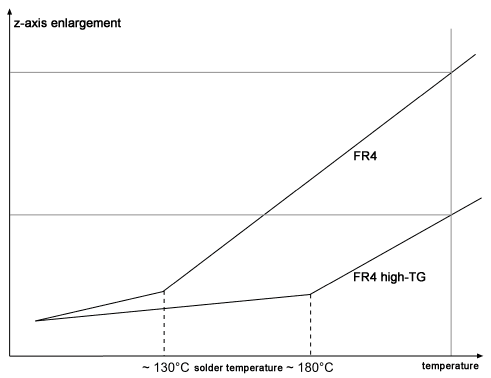
T260 - T288 value, Td
The decomposition temperature Td of a resin system depends on the binding energies within the polymers, and not on the glass transition temperature Tg. A good indicator for this characteristic is the T260 or T288 value, which specifies the time until delamination at 260°C or 288°C, respectively.
A very important indicator of the heat resistance is the time-to-delamination at a certain temperature. This test is preferably performed at 260 °C or 288 °C. The T260- or T288-value is the time to delamination of the tested material at 260 °C or 288 °C, repectively.
Td: Temperature-of-decomposition indicates the temperature at which the base material has lost 5% by weight and is an important parameter for the thermal stability of a base material. Through exceeding this temperature an irreversible degradation and damage to the material by the decomposition occurs.
High TG PCB Advantages
- High glass flow temperature value (TG)
- High-temperature durability
- Long delamination durability
- Low Z-axis expansion (CTE)
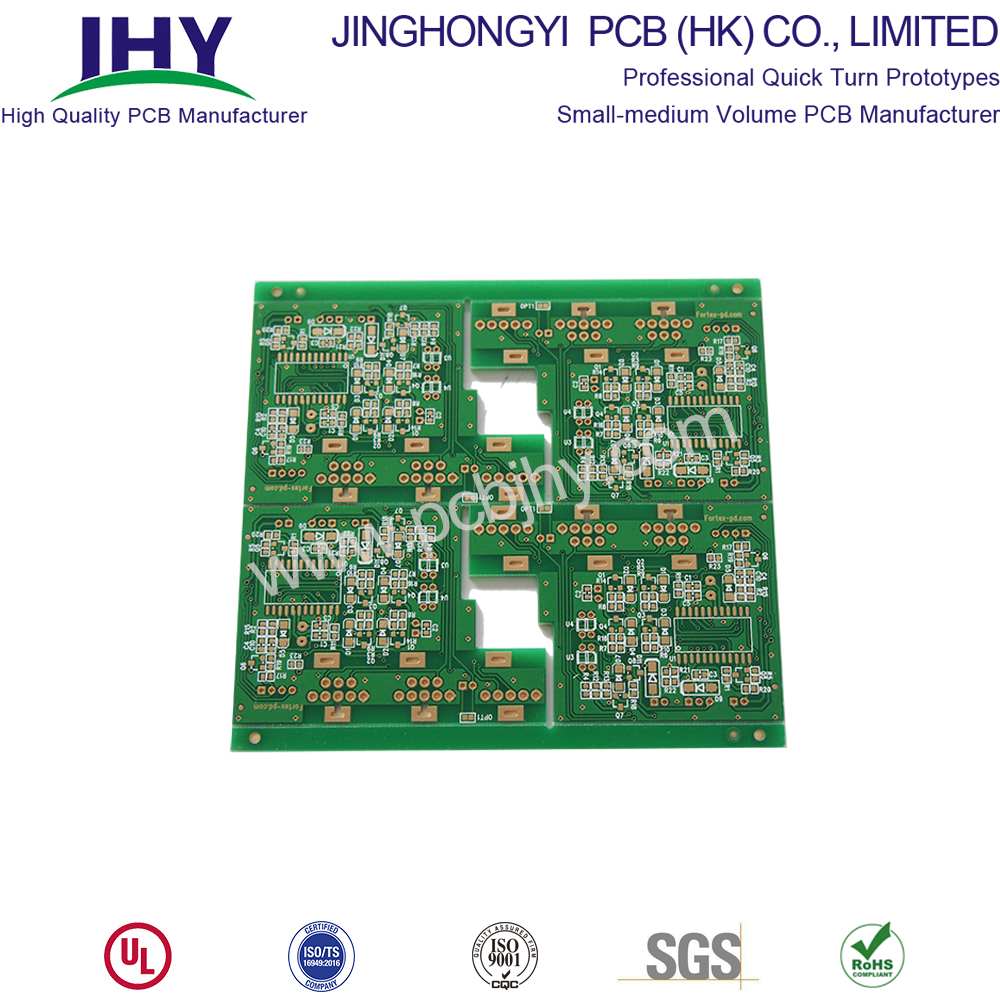 |
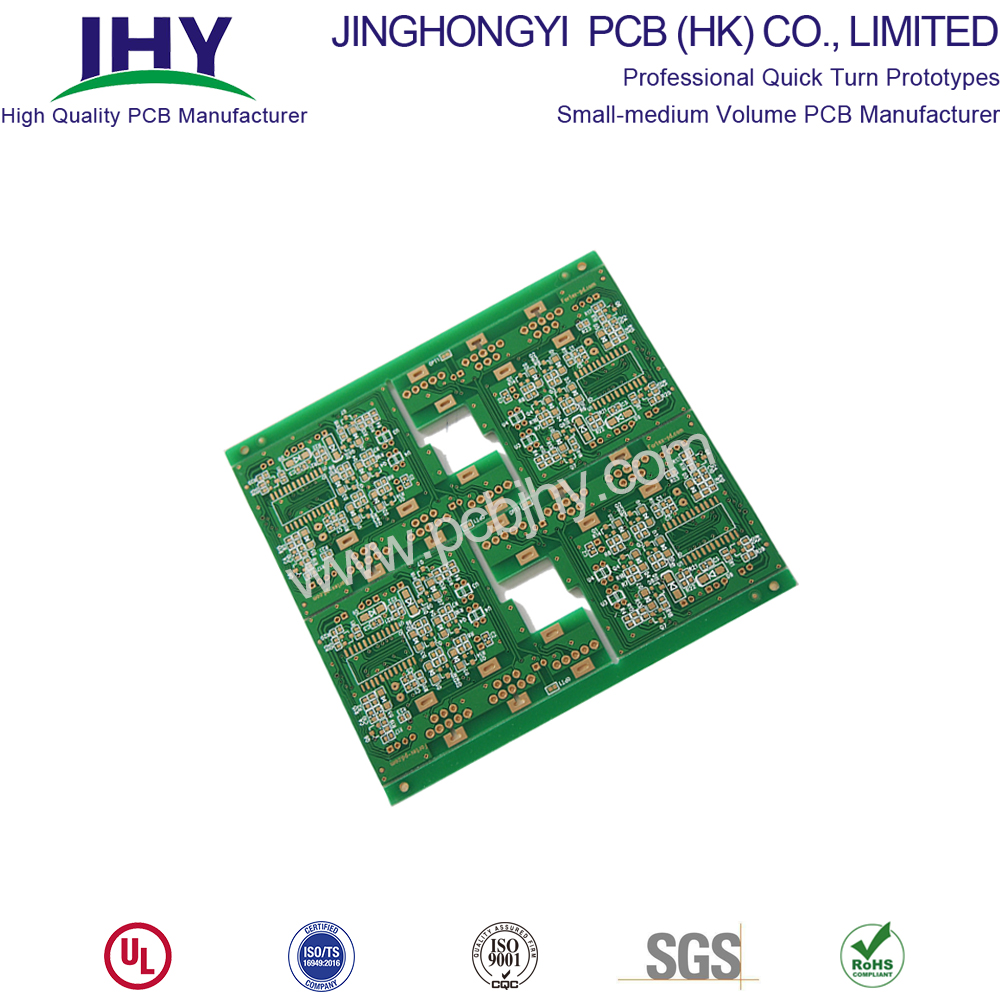 |
High TG PCB manufacturer and manufacturing capability
JHYPCB can manufacture High-Tg Circuit Boards with a Tg value of up to 180°C.
We used below High Tg materials usually, if you need Data Sheet, please contact us directly.
|
Material |
TG |
Td |
CTE-z |
Td260 |
Td288 |
|
(DSC, °C) |
(Wt, °C) |
(ppm/°C) |
(min) |
(min) |
|
|
S1141 (FR4) |
175 |
300 |
55 |
8 |
/ |
|
S1000-2M (FR4) |
180 |
345 |
45 |
60 |
20 |
|
IT180A |
180 |
345 |
45 |
60 |
20 |
|
Rogers 4350B |
280 |
390 |
50 |
/ |
|
Blank PCB,High TG PCB,High TG Circuit Board,High TG Printed Circuit Board
JingHongYi PCB (HK) Co., Limited , https://www.pcbjhy.com